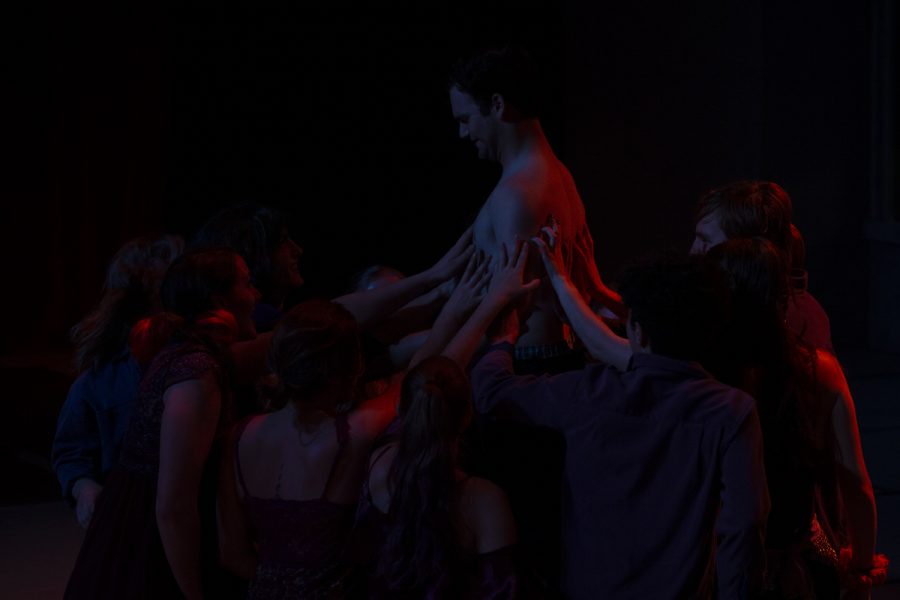Magic to do: Pippin wows audiences in Iowa City Community Theatre’s production
The Iowa City Community Theatre presents a lavish and whimsical production of Stephen Schwartz’s 1972 musical Pippin.
Will Adams, playing Pippin, performs a number, surrounded by cast mates during a dress rehearsal of Pippin put on by the Iowa City Community Theatre at the Johnson Co. Fairgrounds on Wednesday, September 18, 2019. The cast will perform the show September 20-22 and 27-29.
September 26, 2019
The Iowa City Community Theater started its series of shows for the fall season with Stephen Schwartz’s 1972 musical Pippin. The story follows the first-born son of King Charlemagne searching for his purpose, only to be disappointed in every direction, whether through battle or learning the difficulties of ruling. It’s light, hilarious, and heartwarming at times.
Josh Sazon’s direction and Wes Habley’s musical cues bring to life this everlasting tale that has yet to receive the same household name as a classic such as The Sound of Music, but the community theater’s production presents Pippin to a more contemporary audience.
The performances in Pippin are lively, and that may be an understatement. University of Iowa sophomore Will Adams is charming and hilarious as Pippin, building the leading man role we see in today’s blockbusters while mixing a heroic demeanor with a sly sense of humor.
Each number has an introduction by the exuberant Anthony J. Hendricks Sr. in his portrayal of the Leading Player. His vocals add a unique flair to each of the numbers, reminding one of the “Master of Ceremonies” in Cabaret. It may be titled Pippin, but the Leading Player is the most significant role of the play, and Hendrick makes the case for this.
From all the musical numbers, “Spread a Little Sunshine” may be the one that gets stuck in the heads of theater goers, and that is thanks to Alaynna Von Schwartzenheisen. Schwartenheisen has a stunning voice, one which creates a cartoony aesthetic to her portrayal of Fastrada.
Love and admiration must also be given to Becky Machtel as Berthe, who with only a single number steals the show. The list of supporting roles goes on, from Barry Schreier’s portrayal of Charlemagne reminiscent to Jean Marais’ King in Donkey Skin to Ashley Lapointe’s bumbling, over-the-top portrayal of Lewis. Each of these performances adds to the wonder and magic that is Pippin.
The supplements from the production staff make the musical unique. Compared with other iterations, costume designer Donna Bummer puts her own twist to the ensemble’s wardrobe. Other versions have the characters appear in a blend of cabaret and medieval garb, but Bummer decides to make each character appear like descendants of Ziggy Stardust, putting glitter and make-up on the faces of the ensemble similar to that of the David Bowie persona. This update adds a unique attribution to this performance, showcasing a form of individuality.
Dylan Wheeler’s lighting decisions keeps its audience at the edge of their seats, establishing a new tone through different tints of vibrant color. It’s because of this production staff that a theater experience is held sacred since it becomes a collaboration with the material.
Sazon and company recognize the expectation of today’s theatergoers, adding certain elements like Pippin being an awkward adolescent — which Adams successfully portrays — to hilarious results or shifting the scripts lines to fit today’s standards of comedy. Community theater is an embracement of talent, and the theater’s production of Pippin has its audience craving for an encore.



